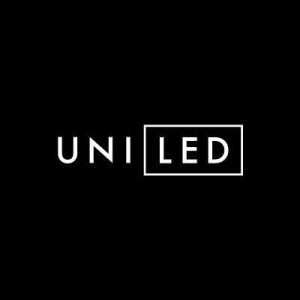
Pushing past the 5%: The Role of Digital in Unlocking AdSpend for OOH

Pushing past the 5% barrier is the perhaps biggest, and arguably the most talked about, global challenge facing the out-of-home (OOH) advertising industry.
Data from the Out of Home Advertising Association of America (OAAA) in Q3 2023, reports that two-thirds (66%) of the top 100 OOH advertisers increased their spend, and almost a third (30%) raised their investment in OOH by more than half compared to last year’s third quarter. Despite this, a mere 2.8% of adspend in 2022 was attributed to OOH - and this is in one of the largest and most profitable OOH markets in the world, alongside China.
There is often a false perception that OOH cannot provide what its digital counterparts can, such as online advertising that offers flexibility; adds value; and captures the right people, at the right time, with the right content using smaller and higher value ads. What is often overlooked, is that digital OOH (DOOH) can not only replicate everything that online digital advertising has to offer but surpass it.
Just like its digital counterparts, DOOH can now be bought programmatically. Not only does this make the media channel easier to buy, it also allows advertisers to optimise campaigns in real-time - leveraging a wide range of data sources to target and trigger activations and integrate DOOH activations as part of omnichannel campaigns.
The use of real-time data in DOOH can help brands and advertisers tailor ad campaigns based on factors such as weather conditions, traffic patterns or sports results. This hyper-targeting ensures that ads are served when, and where, their intended audience will most likely be the most receptive. This is, in part, helping to break down the preconceived notions of DOOH and helping to instigate the growth in the market.
DOOH also incorporates all the advantages of traditional OOH, such as high reach, impact, trustworthiness, brand safety and immunity from ad fraud – a quality that its digital counterparts fail to assert to the same degree.
In fact, according to research from Juniper Research, $84 billion of online digital adspend was lost to ad fraud in 2023 alone. It is predicted that this will grow to $172bn by 2028. DOOH does not have the same level of ad fraud risk, as such it is quickly becoming known as the more trustworthy, brand-safe and ‘non-skippable’ medium available to advertisers.
This can be attributed to the fact that savvy media agencies are now using third-party verification for DOOH campaigns to the same levels they would for online advertising. However, for DOOH it provides a way to track every ad and verify every play on, every screen and in every location throughout the duration of a campaign. This gives brands and advertisers 100% transparency of what has been booked versus what has been delivered, thus reducing the risks associated with ad fraud.
Quite simply, third-party verification provides them with more control, transparency, and accountability to help leverage the full impact of DOOH by better understanding an ad campaign’s performance. This not only builds further trust in the medium, but ultimately its share of adspend.
Much like its digital advertising counterparts, DOOH can also be customised to resonate with specific audiences / demographics, as well as align with the needs of a specific DOOH location i.e., an ad that’s specifically designed for California, may not work in Pennsylvania or the state of New York. This is vital for any ad campaign where there may be a need to react to breaking news, events (political and social), and other real-time signals. This hyper-targeting ensures that ads are served when, and where, their intended audience will most likely be the most receptive.
More importantly, in addition to its high reach, high impact, brand safe, free from fraud, flexible and contextually relevant credentials, DOOH is also highly effective.
A study from the OAAA and Benchmark (part of OMG) revealed that when there is an uplift in OOH share of media plan allocation (or spend) advertisers see increased effectiveness, with measurable impact on sales, brand awareness, consideration, and purchase intent. In addition, Sightline’s Global DOOH Survey states that over three-quarters (77%) of global audiences who had viewed DOOH ads believed that they are informative, two-thirds were encouraged to search for more information about the brand (and/or product or service) online, and around half believed that they were served with the information they needed to make a purchase or were encouraged to make a purchase ‘there and then’. To put it bluntly, the data shows that OOH has both a higher consumer ad recall and drives more consumer action than any other media channel.
The incentive, and momentum, are now there for the US ad industry to push past this 5% barrier. The simple fact is that DOOH has changed the game when it comes to OOH - the format offers brands, and their media agencies, the ability to run ad campaigns that are so much more impactful, effective, efficient, and safe, but most importantly drive invaluable return on investment. In an era where every adspend dollar counts, it couldn’t be more vital that attention is given to this hard-working media channel. Any savvy media agency will be allocating a higher proportion of overall adspend to DOOH media, that’s if they want a truly optimised media plan that delivers for their clients.











